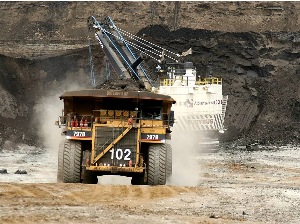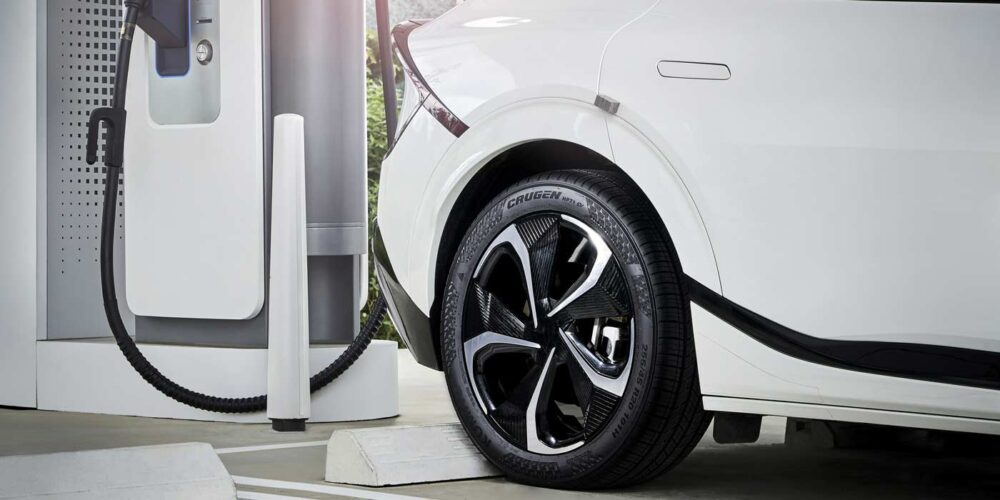The roller coaster that is the giant OTR tire segment is once again on an upward climb. While demand hasn’t yet reached the pre-recession figures seen in 2007 and 2008, last year showed significant recovery. And representatives from several tire manufacturers predict this growth will continue into 2011 and beyond – which raises the question of whether the global shortage of large OTR tires could return.
Speaking about the OTR segment in general, Gary Nash, vice president of OTR sales for Yokohama Tire Corp., said the market historically has seen five years of growth, followed by a three- to four-year period of decline.
“In the past, it has been impossible for major manufacturers to increase their production because of the instability of the market,” he says. “It doesn’t allow them to build new factories, for example, because the recovery for OTR products has never been great and the investment is quite heavy.”
With demand remaining so high, particularly for the larger 57- and 63-inch sizes, tiremakers started investing in OTR facilities in 2006 and into 2008. Nash notes that Yokohama invested in a new radial factory that produces extra-large bias tires.
“During this strong period, manufacturers finally went out and increased their production. Unfor-tunately, in 2009, the economy just stopped – the OTR market went down 38%,” he says. “A lot of people were caught with heavy inventories of merchandise they couldn’t move. There weren’t a lot of tires bought in 2009. People even went so far as to cannibalize their equipment, taking tires off machines that were parked and putting them on machines that were operating.”
Specifically addressing giant OTR sizes, Nash adds that the delayed global demand for new equipment during 2009 did allow time for tiremakers to fill some 57- and 63-inch backorders. A “severe shortage” still exists, but in 2010 the market rebounded to the point that 57- and 63-inch sizes are now allocated to mine-specific operations.
He adds that manufacturers and tire dealers that were saddled with large inventories during the downturn began moving product in 2010 – and at a faster pace than expected. “At Yokohama, we anticipated 3% to 5% growth in 2010, and it went to 18% to 30%. Our supply went from severe overstock in 2009 to the lowest inventory in our history,” Nash says.
“The biggest surprise in 2010 was that the phones started ringing immediately in January and never stopped, whereas in December 2009, they were not ringing at all,” he continues. “Business really started to grow in 2010 and it caught us by surprise. Even though we had an oversupply of inventory coming out from 2009, the inventory turned over very quickly, and we moved with caution because we thought, ‘Is this just a blip on the screen or is it for real?’”
Shawn Rasey, president of Bridgestone Americas’ OTR tire unit, said the company has invested more than $1 billion in OTR tire capacity in the last four years. Much of that capacity already has come on-stream, with a further expansion now in progress. “We were mostly able to meet demand requirements in 2010,” he adds. “However, surging global demand in 2011 will put new pressure on supply capability.”
He notes that in 2010, the 57- and 63-inch ultra class truck tire demand rebounded based on higher global demand for commodities, partly driven by record or near-record commodity prices.
Countries that saw a rebound last year, partly due to mining activities, included China, India and Canada, as well as several South American nations – Brazil, Argentina, Peru and Chile.
“Global demand rose strongly, coming close to pre-crisis levels in the third quarter of 2010,” said Roger Lucas, vice president of sales and marketing for Michelin North America’s earthmover tire unit. “In the infrastructure market, demand was up by around 15% overall compared with the year-earlier period, which represented a low basis of comparison, particularly in Europe and North America.”
He adds that mining played a large role in the 2010 growth trend for giant OTR tires. “Mining enjoyed sustained demand during the crisis and the favorable trend continued in the first nine months of 2010, with robust demand for ore in new markets acting as the main growth driver.
“Michelin responded promptly to the high demand for large mining tires years ago and has continued to bring new capacity and increased productivity to maximize production and meet customer demand as quickly as possible,” he adds. “For example, our Lexington, S.C., earthmover facility has more than doubled its capacity for these tires over the past five years and continues to evolve to meet customer demand. Our plants are running flat out, 24/7.”
2011 and Beyond
Looking ahead, tire dealers can expect a steady 2011, followed by even faster-paced growth in 2012.
“We expect 2011 demand for giant OTR tires to surge as commodity prices stay strong and miners move to take advantage of a strong market,” says Bridgestone’s Rasey. “The OTR tire business can be quite cyclical, but big mining looks to have stable to increasing demand going forward over the next several years. The construction and aggregate market in North America is still lagging somewhat, and while we expect growth in 2011 over 2010, we anticipate the real recovery in this segment will happen in 2012.”
With that increased demand comes the risk of shortages, which were seen prior to the downturn, especially in the larger 57- and 63-inch sizes. Rasey notes that since more normal market fundamentals took over in 2010, some sizes and segments have tightened considerably.
“We expect that trend will continue into 2011 and 2012,” he says. “Certainly, we anticipate some tightness on certain sizes of giant OTR tires, but that also could hold true for some smaller sizes, too.”
Yokohama’s Nash advises that caution is key when forecasting for 2011 because the supply is still critical.
“If you can’t get the merchandise, you can’t set a heavy forecast,” he says. “We’re budgeting with caution and anticipating the cost of raw materials is going to continue going up, especially with raw rubber.
“Tire prices will escalate based on the cost of raw materials going up,” he continues. “I can’t see much of an improvement as far as recovery coming from the ability to sell the product higher. I see the pricing increase only taking care of raw material costs.”
Products and Service
Nash says that in 2011, the tiremaker will introduce new products, including more radial OTR tires. “That’s definitely going to help us because the market demand is 70% radial and 30% bias. Yokohama, on the other hand, is about 30% radial and 70% bias. We can actually take some radial marketshare by introducing new products. We’re going to maintain the bias business, but we’re also going to grow the radial segment.”
He notes that each product is specifically designed for each operation to achieve the lowest cost per hour, even though Yokohama’s “special compounding” takes longer to produce and is more expensive. “When your company is driven by high technology, we feel it is better not to compromise and lessen our quality,” Nash says.
Bridgestone manufactures all-steel giant radials for trucks, which Rasey says is the best technology for these severe applications. “Our research and development capability is backed by tremendous resources, whether it be tire construction, materials or equipment. In the field, we have engineers and development specialists around the globe carefully tracking our products for further opportunities to bring better performance. In total, this integrated package creates a tremendous platform for continued improvement and world-class quality.”
Michelin’s Lucas says end-users in this segment are truly focused on the reduction of costs, especially given the cash-strapped environment experienced over the past couple of years. “We believe that Michelin earthmover products provide a better return on investment through longer life, fewer flats, more uptime and improved productivity.
“End-users care about the true costs of owning a tire, including repair, downtime, wear and price,” he continues. “Michelin offers a ‘total cost of ownership’ tool that graphically illustrates the cost savings over the life of the tire. Tire dealers also play an important role in the industry by providing added value services. They know the customers’ needs and expectations in their local area and are in a position to serve them best.”
Rasey agrees that end-users are looking for products that deliver the lowest operating cost and provide the safest operating conditions.
“Certainly, end users are looking for manufacturers to bring technology and innovative solutions to enhance their productivity,” he says. “But beyond these fundamentals, users want to make sure they are aligned with manufacturers and dealers that can provide solid supply commitments to meet their demand.
“For OTR tire dealers, I can sum it up in three words: service, service, service! This includes tire tracking, forecasting demand and providing tire fitment where required.”













